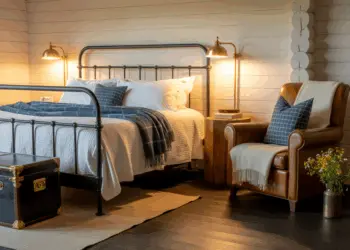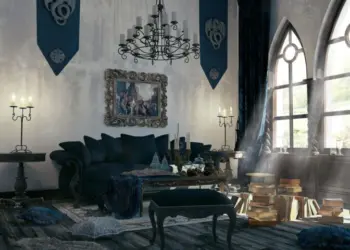Welcome, design enthusiasts, to a journey through the enchanting realm of interior design where tradition and modernity dance together in perfect harmony! If you’re yearning to infuse your living space with a captivating blend of classic charm and contemporary flair, you’ve landed in the right spot. In this article, we will explore 15+ beautiful transitional interior design ideas that are sure to elevate your home to new levels of elegance and sophistication.
Are you ready to transform your living space into a haven that seamlessly bridges the gap between the past and the present? Let’s dive into the world of transitional design and discover the secrets to creating a space that resonates with timeless beauty and modern allure!
Table of Contents
What is Transitional Interior Design?
Transitional interior design is an exquisite tapestry woven from the threads of traditional and modern styles. This unique approach harmonizes disparate elements, giving rise to a cohesive and modern design while preserving the allure of classics. It’s a marriage of luxury and comfort, masculine and feminine, and antique charm with contemporary flair.
Key Components of Transitional Interior Design
- Comfortable, Functional Furnishings: The hallmark of transitional spaces lies in their embrace of comfortable and functional furnishings, emphasizing practicality without sacrificing style.
- Neutral Color Palettes: Tranquil shades like gray and cream form the canvas, providing a clean backdrop that allows the design to focus on texture and layering.
- Minimal Accessories with Strategic Pops of Color: Transitional interiors tread the line between minimalism and vibrancy, incorporating strategic pops of color through accessories while maintaining a sense of simplicity.
- Soft, High-Performing Fabrics: The emphasis on comfort is evident in the choice of fabrics, with suede, chenille, and leather playing pivotal roles in creating a tactile and inviting atmosphere.
- Natural Textiles and Materials: From wood to glass and rattan, natural materials are seamlessly integrated to add interest and depth without overshadowing the overall design.
- Balanced Blend of Masculine and Feminine Styles: The juxtaposition of masculine and feminine elements fosters a dynamic tension within the space, akin to the harmonious interplay of black and white.
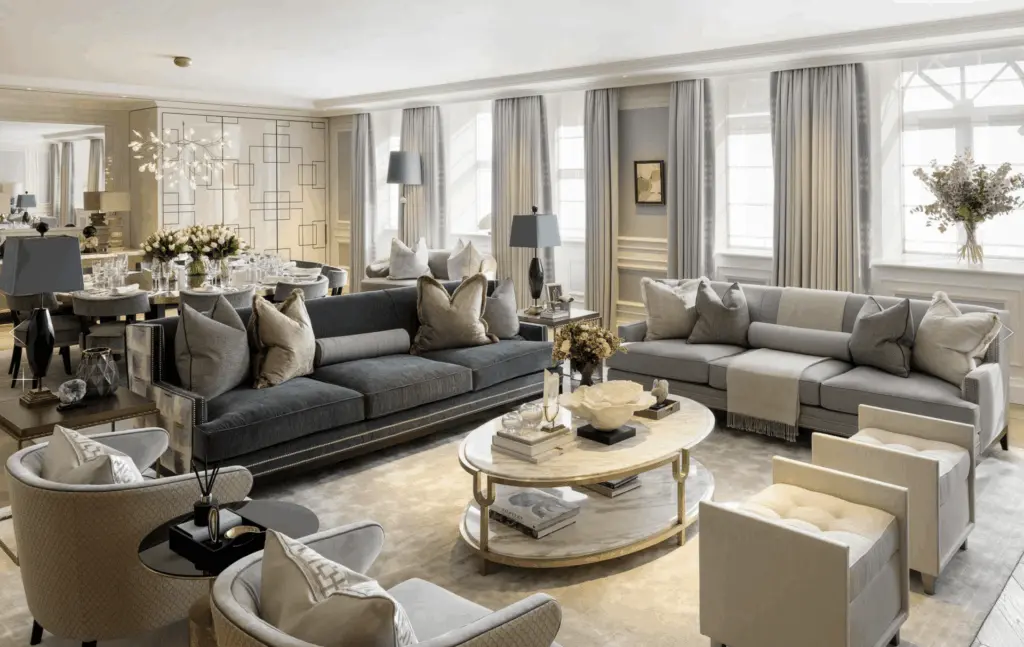
The Palette of Tranquility: Colors in Transitional Design
A carefully curated color palette forms the soul of transitional design, exuding serenity and sophistication. Whites, creams, soft greys, beige, taupe, and tans lay the foundation, offering a clean canvas that allows for creative expression. Deep blues, rich browns, and verdant pops of green inject vibrancy and depth, ensuring a space that is both soothing and visually engaging.
Crafting Functional Elegance: Accessories in Transitional Interiors
In the realm of transitional interiors, accessories play a pivotal role in not just embellishing the space but also serving a functional purpose. From area rugs and decorative pillows to plants and trays, each piece is meticulously selected to tell a unique story and integrate seamlessly into the lifestyle of its inhabitants. The layering of metallic accessories, be it a statement light fixture or sculptural art, adds a touch of glamour, elevating the overall sophistication of the design.
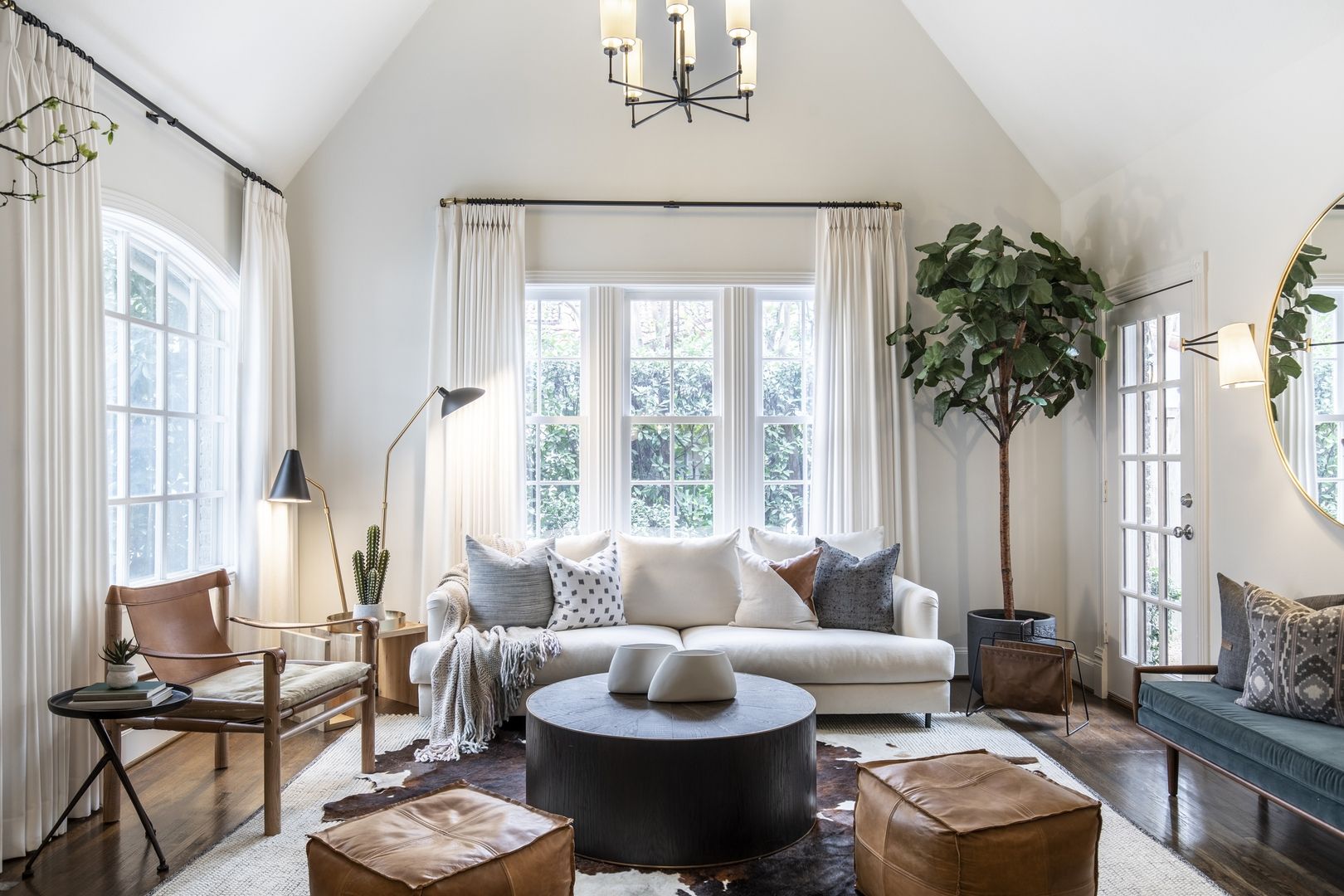
The Symphony of Textures: A Unique Approach to Layering
Unlike traditional design paradigms that rely on vibrant patterns, transitional design champions the art of layering through textures and tones. Fabrics like suede, chenille, and leather coexist harmoniously, creating a multi-dimensional tapestry of tactile experiences. Wood, glass, and rattan contribute textural elements, ensuring that each layer complements the others within the same color family. The result is a living room that exudes warmth and charm, with pops of color strategically placed as decorative accents.
Beautiful Transitional Interior Design Ideas
Mix Classic and Modern Furniture: transitional furniture style
One of the key principles of transitional design is the art of mixing and matching. Combine classic furniture with sleek, modern pieces to achieve a well-balanced aesthetic. Picture a traditional tufted sofa paired with minimalist coffee tables – it’s a match made in design heaven!
Harmonize Contrasting Textures
Create visual interest by incorporating various textures into your design scheme. Picture a plush velvet chair complemented by a sleek glass coffee table. The play between rough and smooth, soft and hard, adds depth and dimension, making your space visually appealing.

Blend Vintage and Contemporary Artwork
Let your walls tell a story of the past and present by blending vintage and contemporary artwork. Hang a classic oil painting beside a modern abstract piece, creating a dynamic focal point that captivates the eye.
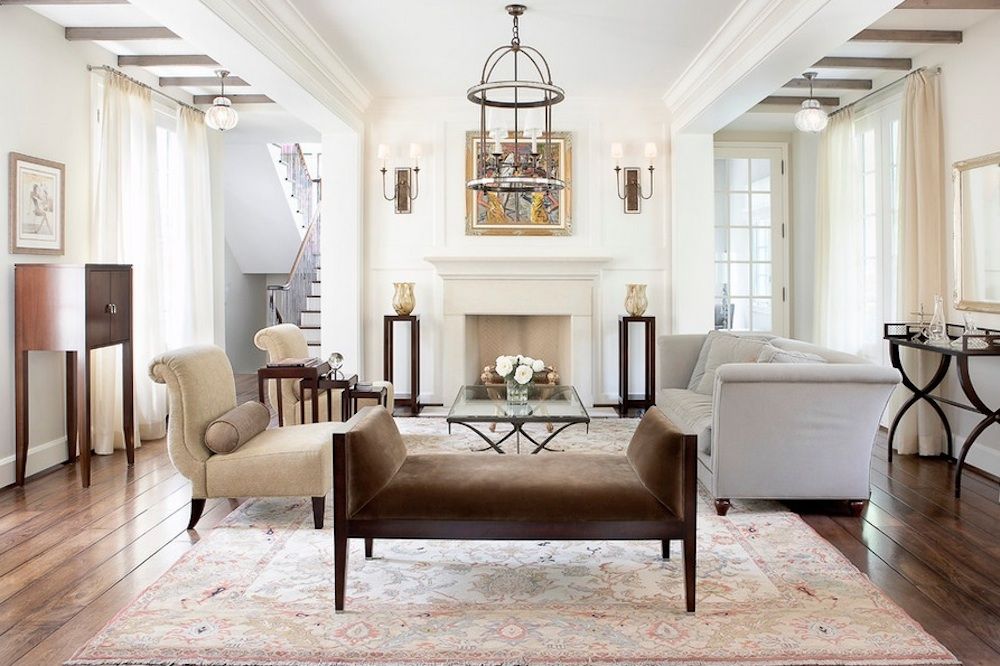
Play With Timeless Patterns
Transitional design allows you to play with patterns that stand the test of time. Think classic stripes, damask, or herringbone. Incorporate these timeless patterns through throw pillows, rugs, or even wallpaper to add a touch of sophistication to your space.

Opt for Timeless Lighting Fixtures
Illuminate your transitional haven with timeless lighting fixtures that bridge the gap between traditional and modern aesthetics. Consider chandeliers with clean lines or pendant lights with a hint of classic charm. The right lighting can transform any space into a captivating oasis.

Invest in Versatile Furniture Pieces
Versatility is the name of the game in transitional design. Choose furniture pieces that can adapt to various styles. A modular sofa or a convertible coffee table provides flexibility, allowing you to effortlessly transition between classic elegance and contemporary chic.

Layer with Luxurious Fabrics
Create a cozy and inviting atmosphere by layering your space with luxurious fabrics. Think silk, cashmere, and faux fur. Incorporate these materials through throw blankets, cushions, and upholstered furniture to add a touch of opulence to your transitional haven.

Integrate Natural Elements
Connect with nature by incorporating natural elements into your design. Wooden accents, stone surfaces, and indoor plants seamlessly bring the outdoors inside, infusing your space with a sense of tranquility and balance.
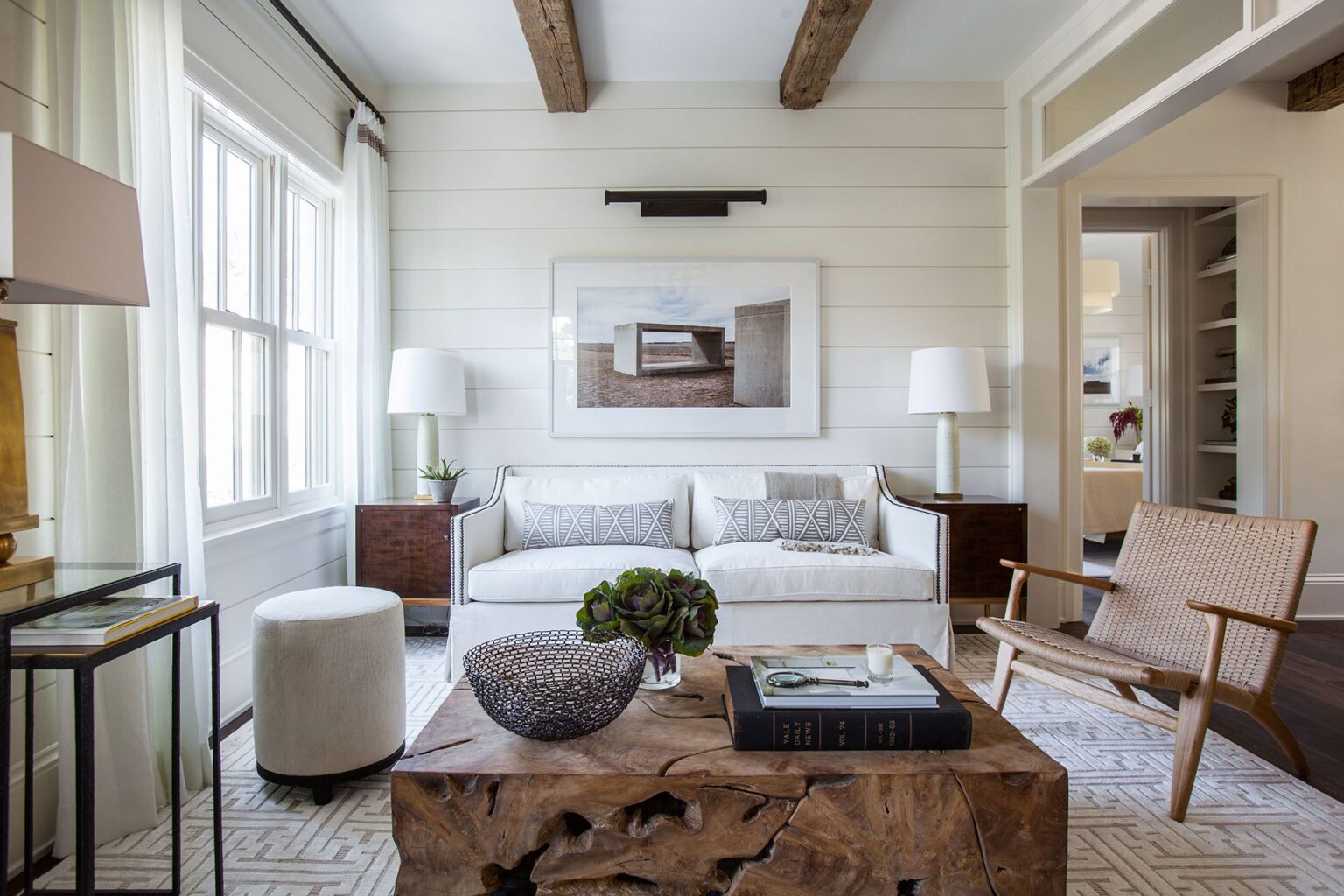
Keep it Clutter-Free
Transitional design thrives on simplicity and balance. Keep your space clutter-free by carefully curating your decor. Choose quality over quantity, allowing each piece to shine and contribute to the overall harmony of the design.

Create a Statement Wall
Transform a room with a statement wall that encapsulates the essence of transitional design. Consider using textured wallpaper, reclaimed wood panels, or a captivating paint color to draw attention and set the tone for the entire space.

Personalize with Meaningful Accessories
Add a personal touch to your transitional haven with meaningful accessories. Family heirlooms, vintage finds, or travel souvenirs can enhance the character of your space, infusing it with warmth and a sense of history.
Embrace Open Shelving
Open shelving provides a perfect opportunity to showcase a curated mix of classic and contemporary pieces. Display your favorite books, cherished antiques, and modern decor items on open shelves to create an eclectic yet harmonious look.

Curate a Cozy Reading Nook
Transform a corner of your living space into a cozy reading nook that seamlessly blends comfort and style. A classic armchair paired with a modern floor lamp creates the perfect spot for relaxation, bridging the gap between old-world charm and contemporary comfort.
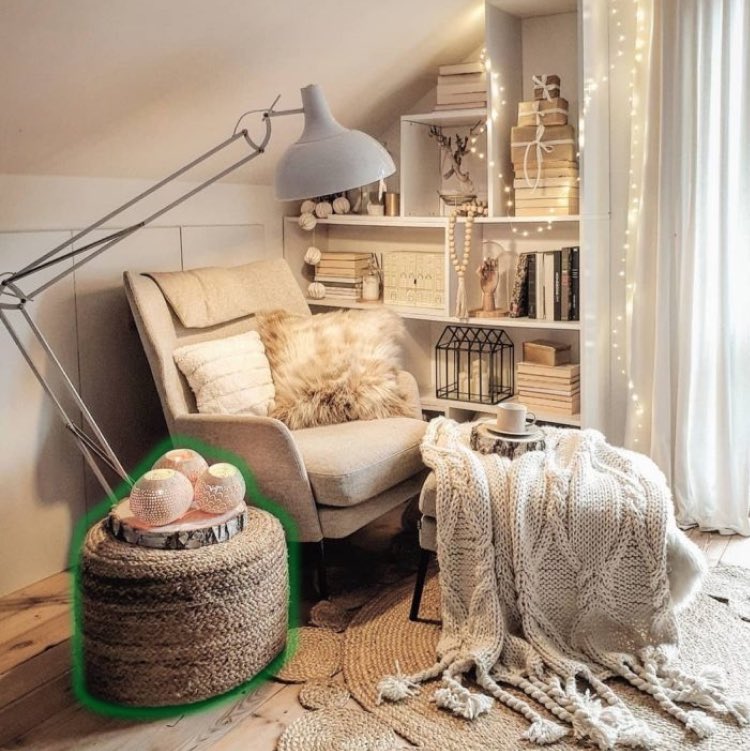
Connect Indoor and Outdoor Spaces
Extend the transitional magic to your outdoor spaces by creating a seamless connection between indoors and outdoors. Use similar color schemes, materials, and design elements to blur the lines and establish a harmonious flow.

Congratulations! You’ve now embarked on a journey through 15+ beautiful transitional interior design ideas that effortlessly marry tradition and modernity. As you navigate the world of neutral palettes, mixed furniture, and timeless patterns, remember that transitional design is all about finding the perfect balance.
So, whether you’re revamping your entire home or just looking to infuse a touch of transitional charm into a single room, these ideas serve as your guide to creating a space that resonates with sophistication, elegance, and a timeless allure. Embrace the beauty of the past and the excitement of the present – your transitional haven awaits!
FAQs
What is transitional interior design?
Transitional interior design is a style that blends elements from both traditional and modern design aesthetics, creating a balanced and timeless look. This style aims to bridge the gap between classic and contemporary, incorporating a mix of classic furnishings with more modern elements. Key characteristics of transitional design include:
- Neutral Color Palette: The use of neutral colors like beige, taupe, and gray.
- Balance of Traditional and Modern Furniture: Combining classic and contemporary pieces for a harmonious look.
- Subtle Patterns: Incorporating understated patterns and textures.
- Simple Lines: Avoiding ornate details, favoring cleaner lines.
- Mix of Materials: Integrating a variety of materials, such as wood, metal, and glass.
What is the concept of transition design?
Transition design, in a broader sense, refers to a design approach that addresses complex, long-term societal issues. It aims to facilitate a transition from one state to another, often involving sustainability, social change, and system-level thinking. This concept is more related to larger-scale societal and environmental concerns rather than interior design.
Why is it called a transitional style?
The term “transitional” in interior design is used because this style acts as a bridge or transition between traditional and modern aesthetics. It brings together elements from both styles, creating a cohesive and versatile design that appeals to a broad range of tastes.
What is the difference between traditional and transitional style?
The main differences between traditional and transitional styles include:
- Details and Ornamentation: Traditional style often features more intricate details and ornamentation, while transitional style leans towards simpler lines and fewer embellishments.
- Color Palette: Traditional styles may incorporate richer, deeper colors, whereas transitional styles often use a neutral color palette.
- Furniture: Traditional furniture tends to be more ornate, while transitional furniture strikes a balance between classic and modern, with simpler lines.
What is an example of a transitional design style?
An example of a transitional design style could be a living room with a mix of classic, comfortable furniture pieces featuring clean lines, paired with contemporary artwork and modern accessories. The combination creates a harmonious and timeless space that is neither too traditional nor overly modern.



